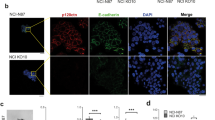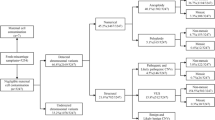Abstract
Purpose
Endometriosis is a common chronic gynecological disease greatly affecting women health. Prior studies have implicated that dysferlin (DYSF) aberration might be involved in the pathogenesis of ovarian endometriosis. In the present study, we explore the potential presence of DYSF mutations in a total of 152 Han Chinese samples with ovarian endometriosis.
Methods
We analyze the potential presence of DYSF mutations by direct DNA sequencing.
Results
A total of seven rare variants/mutations in the DYSF gene in 10 out of 152 samples (6.6%) were identified, including 5 rare variants and 2 novel mutations. For the 5 rare variants, p.R334W and p.G941S existed in 2 samples, p.R865W, p.R1173H and p.G1531S existed in single sample, respectively; for the two novel mutations, p.W352* and p.I1642F, they were identified in three patients. These rare variants/mutations were absent or existed at extremely low frequency either in our 1006 local control women without endometriosis, or in the China Metabolic Analytics Project (ChinaMAP) and Genome Aggregation Database (gnomAD) databases. Evolutionary conservation analysis results suggested that all of these rare variants/mutations were evolutionarily conserved among 11 vertebrate species from Human to Fox. Furthermore, in silico analysis results suggested these rare variants/mutations were disease-causing. Nevertheless, we find no significant association between DYSF rare variants/mutations and the clinical features in our patients. To our knowledge, this is the first report revealing frequent DYSF mutations in ovarian endometriosis.
Conclusion
We identified a high frequency of DYSF rare variants/mutations in ovarian endometriosis for the first time. This study suggests a new correlation between DYSF rare variants/mutations and ovarian endometriosis, implicating DYSF rare variants/mutations might be positively involved in the pathogenesis of ovarian endometriosis.


Similar content being viewed by others
References
Yan Q, Huang C, Jiang Y et al (2018) Calpain7 impairs embryo implantation by downregulating β3-integrin expression via degradation of HOXA10. Cell Death Dis 9(3):291
Vitale SG, Capriglione S, Peterlunger I et al (2018) The role of oxidative stress and membrane transport systems during endometriosis: a fresh look at a busy corner. Oxid Med Cell Longev 2018:7924021
Maia LM, Rocha AL, Del Puerto HL et al (2018) Plasma urocortin-1 as a preoperative marker of endometriosis in symptomatic women. Gynecol Endocrinol 34(3):202–205
Borghese B, Zondervan KT, Abrao MS et al (2017) Recent insights on the genetics and epigenetics of endometriosis. Clin Genet 91(2):254–264
Barthélémy F, Defour A, Lévy N et al (2018) Muscle cells fix breaches by orchestrating a membrane repair ballet. J Neuromuscul Dis 5(1):21–28
Han R, Frett EM, Levy JR et al (2010) Genetic ablation of complement C3 attenuates muscle pathology in dysferlin-deficient mice. J Clin Invest 120(12):4366–4374
Chiu YH, Hornsey MA, Klinge L et al (2009) Attenuated muscle regeneration is a key factor in dysferlin-deficient muscular dystrophy. Hum Mol Genet 18(11):1976–1989
Li L, Jing Z, Cheng L et al (2020) Compound heterozygous DYSF variants causing limb-girdle muscular dystrophy type 2B in a Chinese family. J Gene Med. 22(11):3272
Hu YY, Lian YJ, Xu HL et al (2018) Novel, de novo dysferlin gene mutations in a patient with Miyoshi myopathy. Neurosci Lett 664:107–109
Schmidt WM, Uddin MH, Dysek S et al (2011) DNA damage, somatic aneuploidy, and malignant sarcoma susceptibility in muscular dystrophies. PLoS Genet. 7(4):1002042
Hosur V, Kavirayani A, Riefler J et al (2012) Dystrophin and dysferlin double mutant mice: a novel model for rhabdomyosarcoma. Cancer Genet 205(5):232–241
Yin J, Zhang Y, Zhang Y et al (2018) Reporting on two novel fusions, DYSF-ALK and ITGAV-ALK, coexisting in one patient with adenocarcinoma of lung, sensitive to crizotinib. J Thorac Oncol 13(3):e43–e45
Tang H, Wei P, Chang P et al (2017) Genetic polymorphisms associated with pancreatic cancer survival: a genome-wide association study. Int J Cancer 141(4):678–686
Ha M, Jeong H, Roh JS et al (2019) DYSF expression in clear cell renal cell carcinoma: a retrospective study of 2 independent cohorts. Urol Oncol 37(10):735–741
Jones S, Wang TL, Shih IM et al (2010) Frequent mutations of chromatin remodeling gene ARID1A in ovarian clear cell carcinoma. Science 330(6001):228–231
Bi M, Zhao S, Said JW et al (2016) Genomic characterization of sarcomatoid transformation in clear cell renal cell carcinoma. Proc Natl Acad Sci U S A 113(8):2170–2175
Matsumura N, Mandai M, Okamoto T et al (2010) Sorafenib efficacy in ovarian clear cell carcinoma revealed by transcriptome profiling. Cancer Sci 101(12):2658–2663
Mabuchi S, Kawase C, Altomare DA et al (2010) Vascular endothelial growth factor is a promising therapeutic target for the treatment of clear cell carcinoma of the ovary. Mol Cancer Ther 9(8):2411–2422
Glasspool RM, McNeish IA (2013) Clear cell carcinoma of ovary and uterus. Curr Oncol Rep 15(6):566–572
Anglesio MS, Papadopoulos N, Ayhan A (2017) Cancer-associated mutations in endometriosis without cancer. N Engl J Med 376(19):1835–1848
Zou Y, Zhou JY, Guo JB et al (2018) The presence of KRAS, PPP2R1A and ARID1A mutations in 101 Chinese samples with ovarian endometriosis. Mutat Res 809:1–5
Suda K, Diaz LA, Yoshihara K et al (2020) Clonal lineage from normal endometrium to ovarian clear cell carcinoma through ovarian endometriosis. Cancer Sci 111(8):3000–3009
Tomohiro M, Matsumoto T, Miura R et al (2019) Alterations in β-catenin, microsatellite instability, and HNF-1β levels are independently associated with ovarian endometriosis-associated tumorigenesis. Hum Pathol 89:10–23
Zou Y, Zhou JY, Guo JB et al (2019) Mutation analysis of ZP1, ZP2, ZP3 and ZP4 genes in 152 Han Chinese samples with ovarian endometriosis. Mutat Res 813:46–50
Tamura K, Dudley J, Nei M et al (2007) MEGA4: molecular evolutionary genetics analysis (MEGA) software version 4.0. Mol Biol Evol. 24(8):1596–1599
Ng PC, Henikoff S (2003) SIFT: Predicting amino acid changes that affect protein function. Nucleic Acids Res 31(13):3812–3814
Adzhubei I, Jordan DM, Sunyaev SR (2013) Predicting functional effect of human missense mutations using PolyPhen-2. Curr Protoc Hum Genet. Chapter 7:Unit7.20
Schwarz JM, Cooper DN, Schuelke M et al (2014) MutationTaster2: mutation prediction for the deep-sequencing age. Nat Methods 11(4):361–362
Richards S, Aziz N, Bale S et al (2015) Standards and guidelines for the interpretation of sequence variants: a joint consensus recommendation of the American College of Medical Genetics and Genomics and the Association for Molecular Pathology. Genet Med 17(5):405–424
Hornsey MA, Laval SH, Barresi R et al (2013) Muscular dystrophy in dysferlin-deficient mouse models. Neuromuscul Disord 23(5):377–387
Hofhuis J, Bersch K, Büssenschütt R et al (2017) Dysferlin mediates membrane tubulation and links T-tubule biogenesis to muscular dystrophy. J Cell Sci 130(5):841–852
Fernández G, Arias-Bravo G, Bevilacqua JA et al (2020) Myofibers deficient in connexins 43 and 45 expression protect mice from skeletal muscle and systemic dysfunction promoted by a dysferlin mutation. Biochim Biophys Acta Mol Basis Dis. 1866(8):165800
Lee JA, Maruyama R, Duddy W et al (2018) Identification of novel antisense-mediated exon skipping targets in DYSF for therapeutic treatment of dysferlinopathy. Mol Ther Nucleic Acids 13:596–604
Patel NJ, Dyke KW, Espinoza LR (2017) Limb-girdle muscular dystrophy 2B and miyoshi presentations of dysferlinopathy. Am J Med Sci 353(5):484–491
Nguyen K, Bassez G, Krahn M et al (2007) Phenotypic study in 40 patients with dysferlin gene mutations: high frequency of atypical phenotypes. Arch Neurol 64(8):1176–1182
Mabrouk M, Raimondo D, Forno SD et al (2018) Pelvic floor muscle assessment on three- and four-dimensional transperineal ultrasound in women with ovarian endometriosis with or without retroperitoneal infiltration: a step towards complete functional assessment. Ultrasound Obstet Gynecol 52(2):265–268
Acknowledgements
We thank the sample donors who involved in the present study.
Funding
This study was supported by China Postdoctoral Science Foundation (No. 2018M642594), Jiangxi Province Postdoctoral Science Foundation (2018KY21), and the Science Foundation of Jiangxi Province (No. 20181BBG70018).
Author information
Authors and Affiliations
Contributions
LS Peng: investigation; ZM Li: sample collection; G Chen: investigation; FY Liu: investigation; Y Luo: data analysis; JB Guo: sample collection; GD Gao: data analysis; YH Deng: sample collection; LX Xu: investigation; JY Zhou: writing, and editing; Y Zou: Methodology, manuscript revision.
Corresponding authors
Ethics declarations
Conflict of interest
None.
Ethics approval
The Institutional Ethics Committee of Jiangxi Provincial Maternal and Child Health Hospital approved this study.
Additional information
Publisher's Note
Springer Nature remains neutral with regard to jurisdictional claims in published maps and institutional affiliations.
Li-Sha Peng and Zeng-Ming Li are the co-first authors.
Rights and permissions
About this article
Cite this article
Peng, LS., Li, ZM., Chen, G. et al. Frequent DYSF rare variants/mutations in 152 Han Chinese samples with ovarian endometriosis. Arch Gynecol Obstet 304, 671–677 (2021). https://doi.org/10.1007/s00404-021-06094-8
Received:
Accepted:
Published:
Issue Date:
DOI: https://doi.org/10.1007/s00404-021-06094-8




